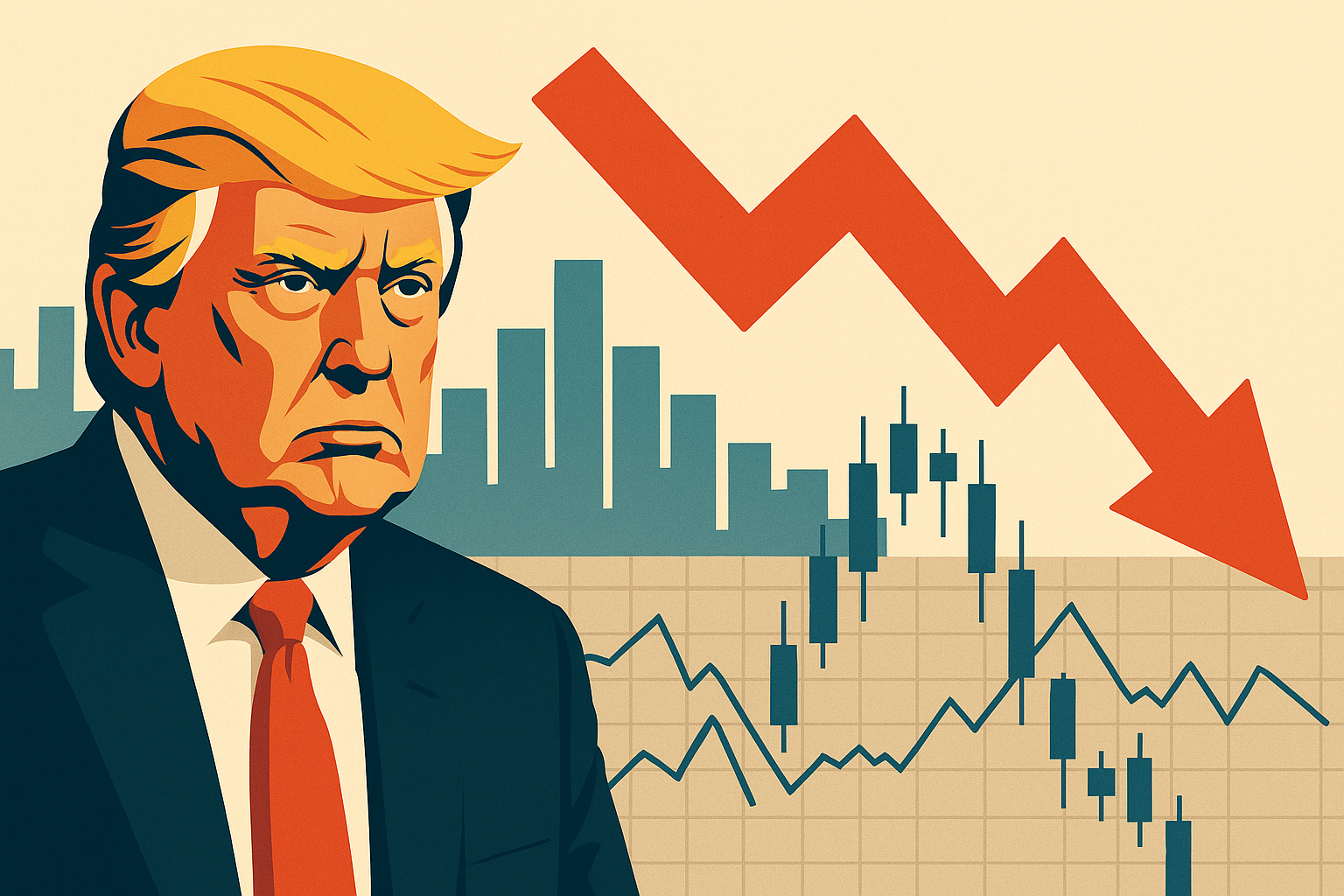Financial markets are caught in a state of confusion as former President Donald Trump’s policy shifts continue to create contradictory economic signals. While the White House pushes ahead with new tariffs and fiscal reforms, investors and economists alike are struggling to reconcile opposing trends in bond and equity markets.
Tariffs, Flip-Flops, and Policy Contradictions
Trump has repeatedly issued bold economic pronouncements — from “final” tariff threats to sweeping promises on debt and deregulation — only to backtrack shortly after. While his administration insists its policies are focused on industrial job creation and restoring dollar dominance, actions such as the weakening of the Inflation Reduction Act and a 10% drop in the U.S. dollar’s value under Treasury Secretary Scott Bessent have raised concerns over the policy’s internal consistency.
Adding to the uncertainty is Trump’s pattern of reversing course. He has walked back threats to fire Federal Reserve Chair Jay Powell, quietly removed a controversial Section 899 clause that could have rattled Treasury investors, and softened tariff deadlines multiple times — leading many to question the seriousness of his positions.
Markets Sending Mixed Messages
In recent weeks, the one-year swaps market has begun pricing in modest interest rate cuts, suggesting expectations of slower growth and weaker inflation. In contrast, equity markets are reaching record highs, driven by strong corporate earnings and rising confidence in economic expansion.
According to Torsten Sløk, chief economist at Apollo Global Management, the inconsistency is troubling. “Either the bond market is wrong, and rates must move higher due to accelerating growth. Or equity markets are wrong, and stocks have to move lower because growth is slowing down,” he explained.
Theories Behind the Disjointed Trends
Economists and analysts are divided on how to explain the market divergence. Some subscribe to what’s been jokingly dubbed the “Double Taco” theory, coined by FT’s Robert Armstrong — the idea that Trump routinely bluffs on tariffs and rarely follows through. In this view, bond markets are betting Trump’s threats will not materialize, while equity investors assume any eventual tariffs will be softened, creating minimal long-term impact.
Others suggest a more optimistic “Double Genius” hypothesis: that Trump’s team will execute a combination of growth-boosting policies, lower inflation through deregulation and energy reforms, and reduce the deficit through increased tariffs and higher revenues. Kevin Hassett, Trump’s economic advisor, insists the BBB Act will deliver all of this simultaneously.
Bessent, meanwhile, has brushed off concerns from agencies like Moody’s, which downgraded the U.S. credit rating amid the growing $37 trillion national debt. He argues revenues will rise thanks to trade reforms and economic expansion. His team is also implementing measures to ease pressure from the looming $9 trillion Treasury auctions, including pushing short-term bond issuance and encouraging banks to increase their holdings — despite having previously criticized this exact strategy.
Real-World Economic Impact: Unclear but Growing
While global institutions like the World Bank have warned of tariff-related growth slowdowns, others like Oxford Economics predict only minor effects. The new 50% copper tariff and expanded levies are expected to add just 0.08 percentage points to core inflation and reduce real GDP by only 0.1%, with the BBB Act’s stimulus potentially offsetting that loss.
Still, uncertainty remains. U.S. companies have been stockpiling goods to avoid tariffs and restructuring global supply chains — a complex task for industries like electronics and automotive. A McKinsey report highlighted that while reshuffling supply chains is relatively easy for low-tech goods, it is far more difficult for sectors like semiconductors and laptops.
On immigration, the Dallas Fed recently warned that Trump’s restrictions could cut GDP by up to 1 percentage point, though the timeline remains vague. Additionally, planned spending cuts won’t take effect until after the 2026 midterm elections, leaving investors in limbo about their real economic impact.
What’s Next?
The true picture may emerge when major American companies release their next round of earnings reports, offering a clearer signal of business confidence and market resilience. Until then, the current environment of policy flip-flops, delayed fiscal impacts, and conflicting market indicators leaves investors uncertain and portfolios at risk.
In short, Trump’s policy volatility has become a key market force — one that defies traditional forecasting models. As both bonds and equities send mixed signals, traders and analysts are left to interpret a uniquely unpredictable economic landscape.



